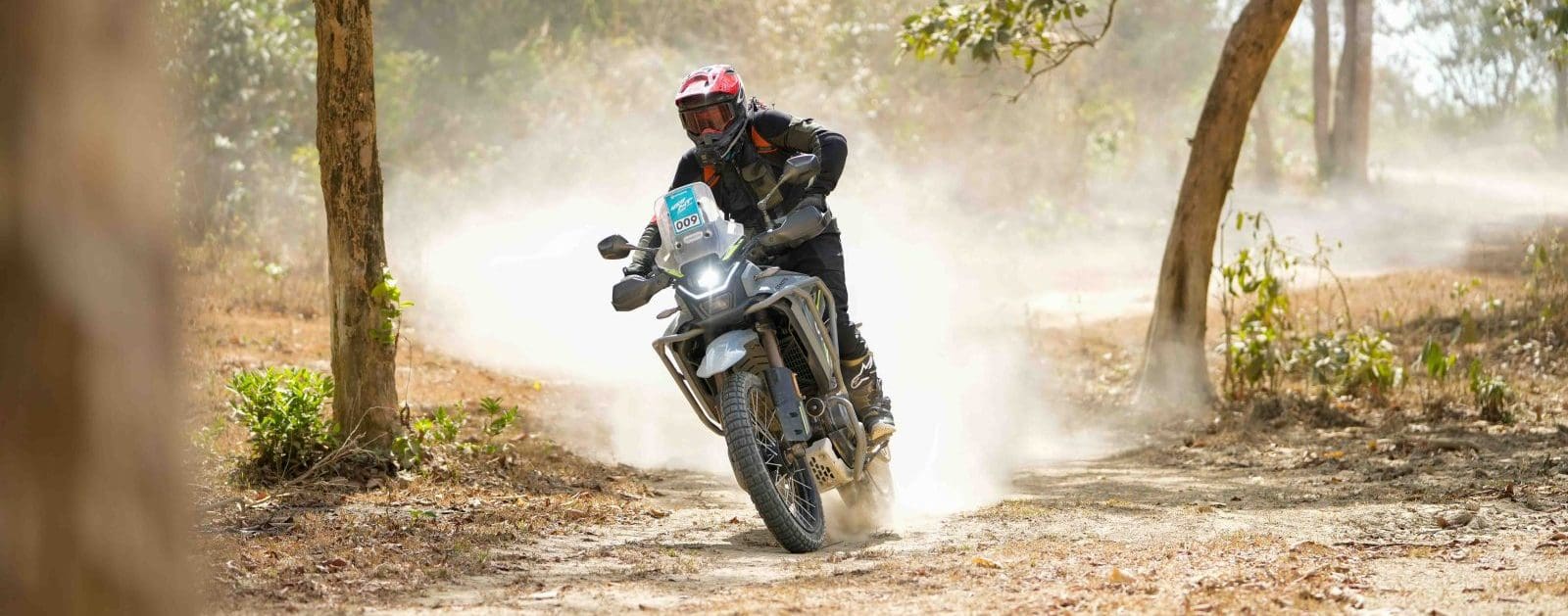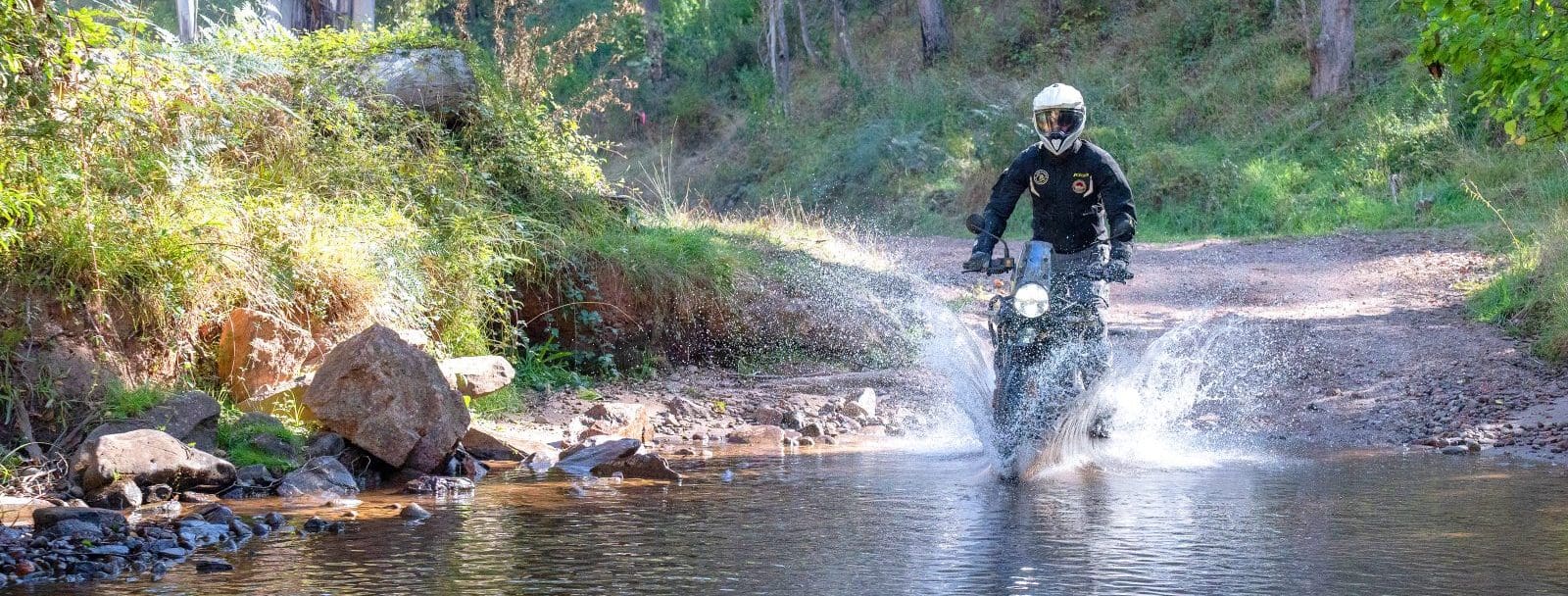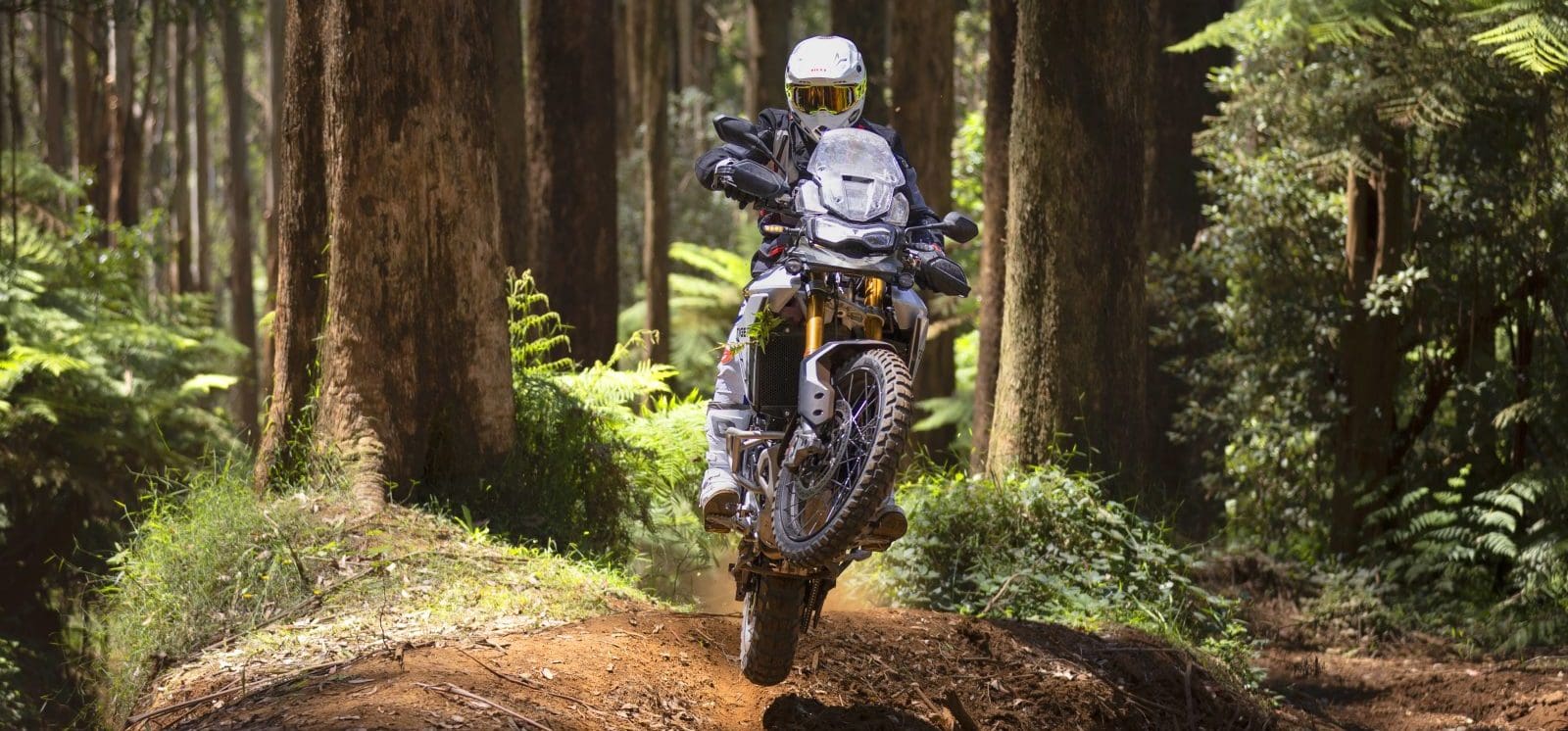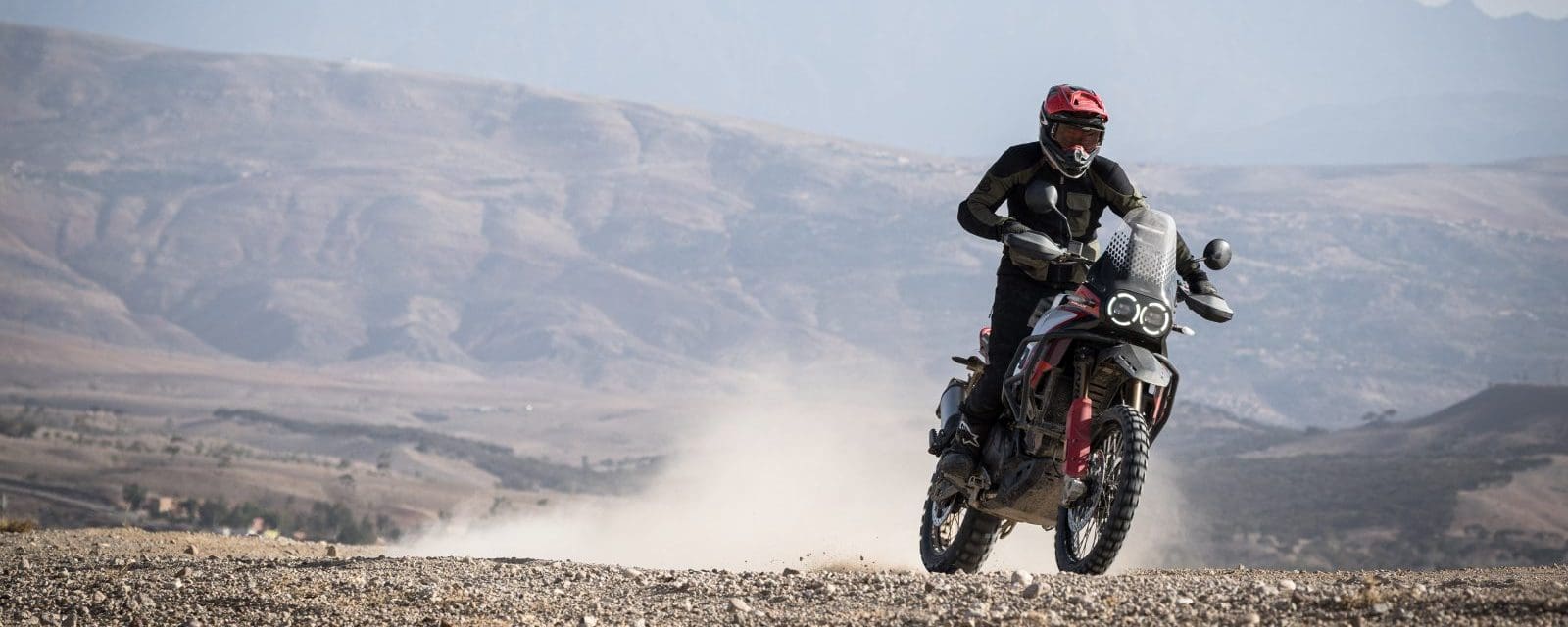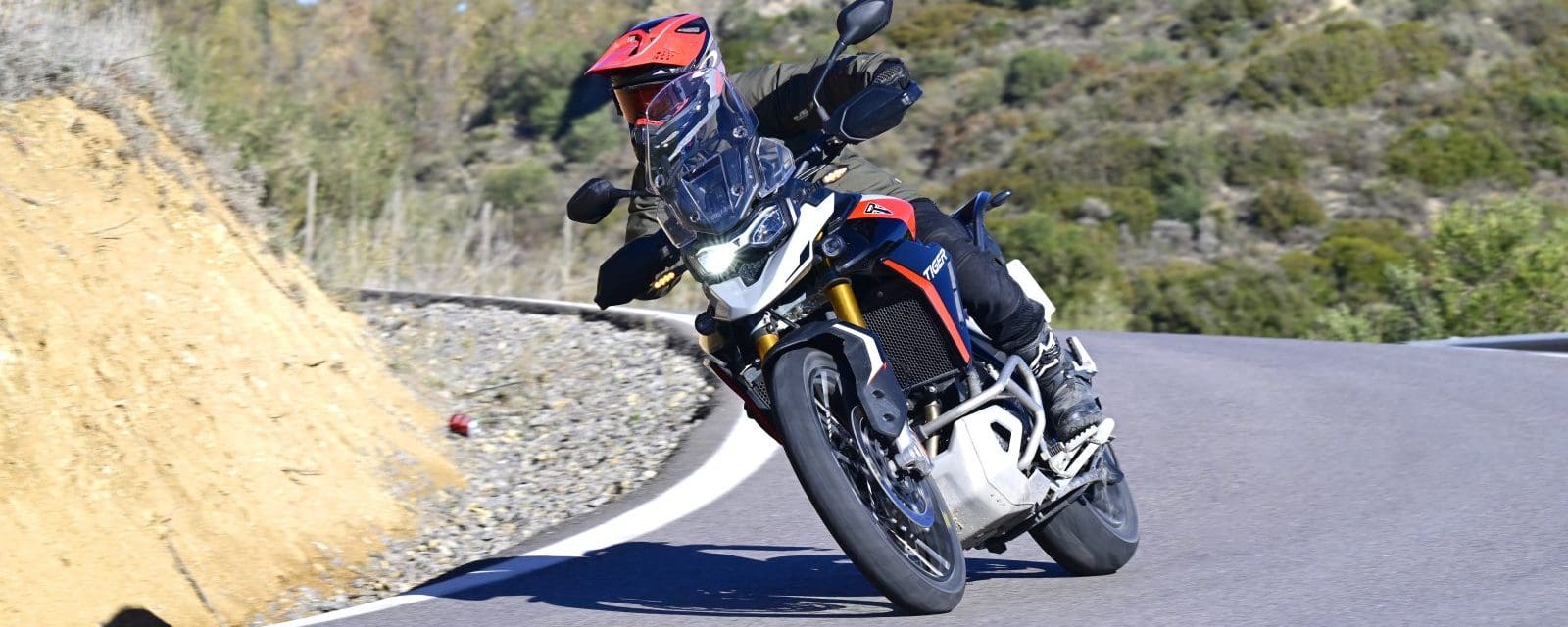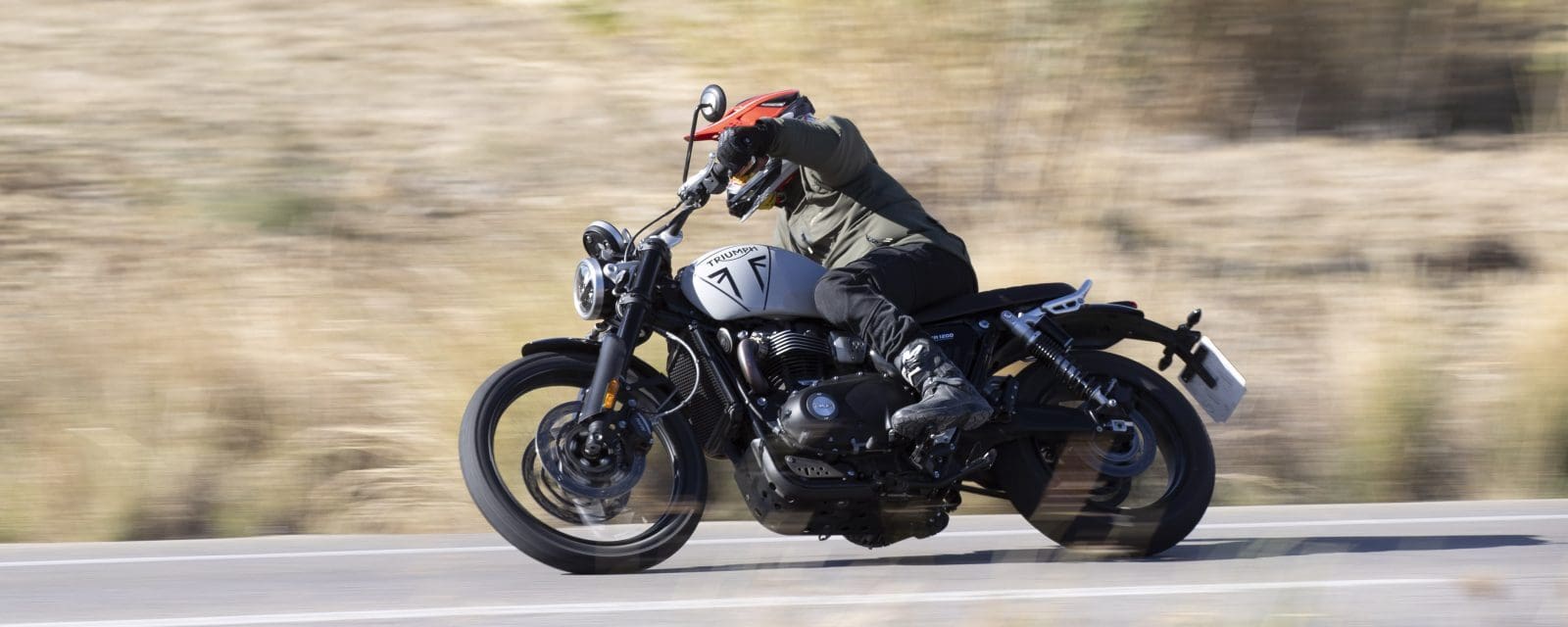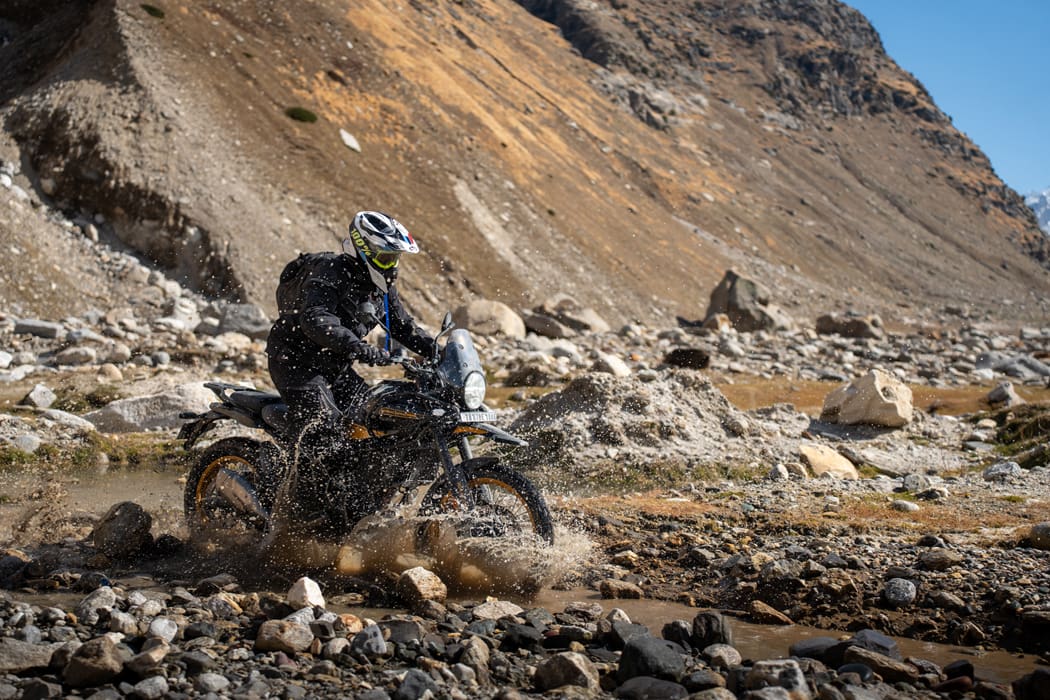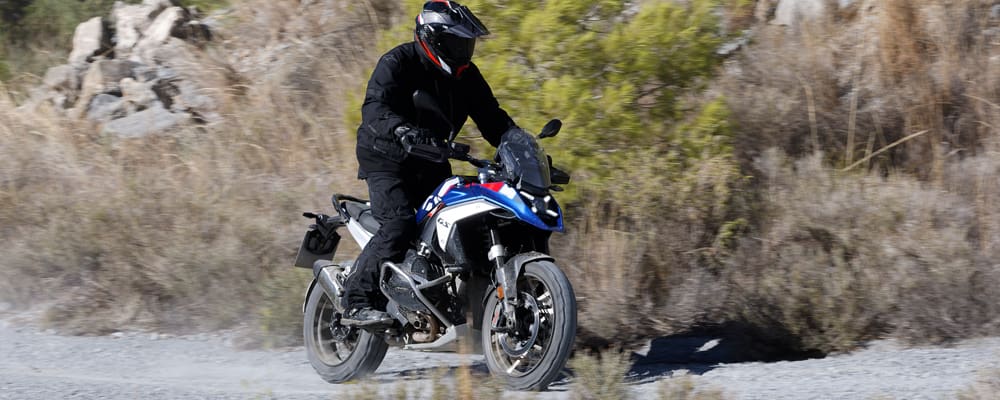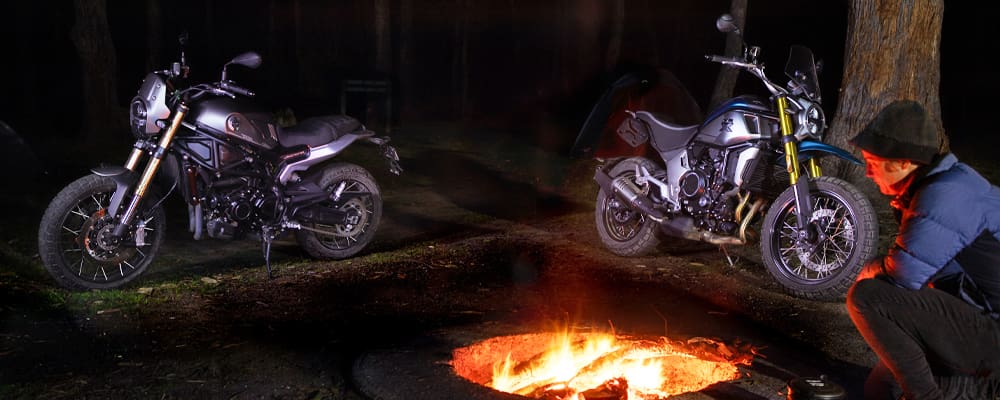Honda has filled a gap between its Africa Twin and CB500X with the new XL750 Transalp and, after attending the Australian launch in the Gold Coast hinterland, it’s fair to say that it has released an affordable and effective adventure bike. But it’s not alone, and the Transalp is instantly being compared to Suzuki’s new V-Strom 800DE.
The Transalp lists at $14,499 plus on-roads (about $16k ride away), which is around $2500 less than the V-Strom, but the Suzuki does come with more fruit in standard trim, including a quickshifter and adjustable suspension. Yes, you can option up your Transalp with a quickshifter, but not with adjustable suspension.

There are plenty of other bikes in the mid-capacity adventure segment too, like KTM’s 890 Adventure R, Yamaha’s Ténéré 700 and Husqvarna’s Norden 901, but that trio of bikes are either more off-road focused, more expensive, or both.
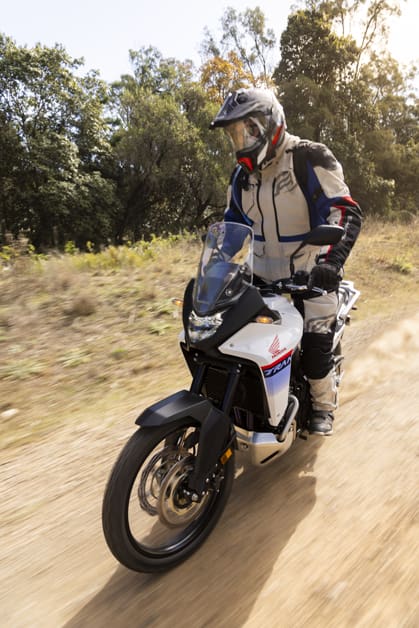
Anyone familiar with Honda’s new CB750 Hornet will be greeted by a familiar sight when they mount up on the Transalp. The five-inch TFT dash with inbuilt Honda Smartphone Voice Control system is shared with the Hornet, as are most of the buttons and switches used to control it.
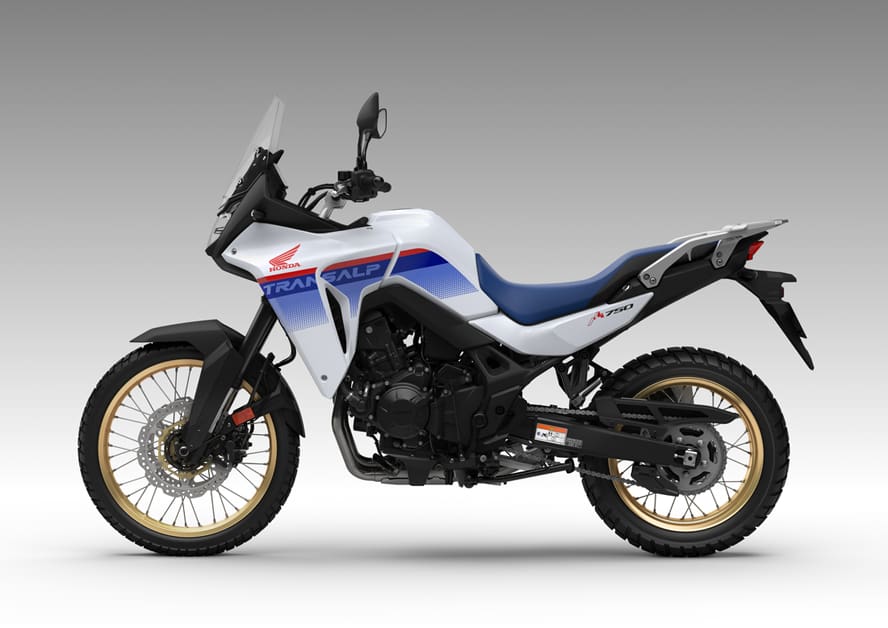
The cockpit is roomy with not too much bend at the knees when your feet are up on the ’pegs, and the 16.9-litre tank is perfectly shaped to tuck said knees into. As far as adventure bikes go, the seat is a manageable 850mm and, at 186cm tall, I had no problem getting my feet flat on the ground, and indeed with a slight bend in my knees.
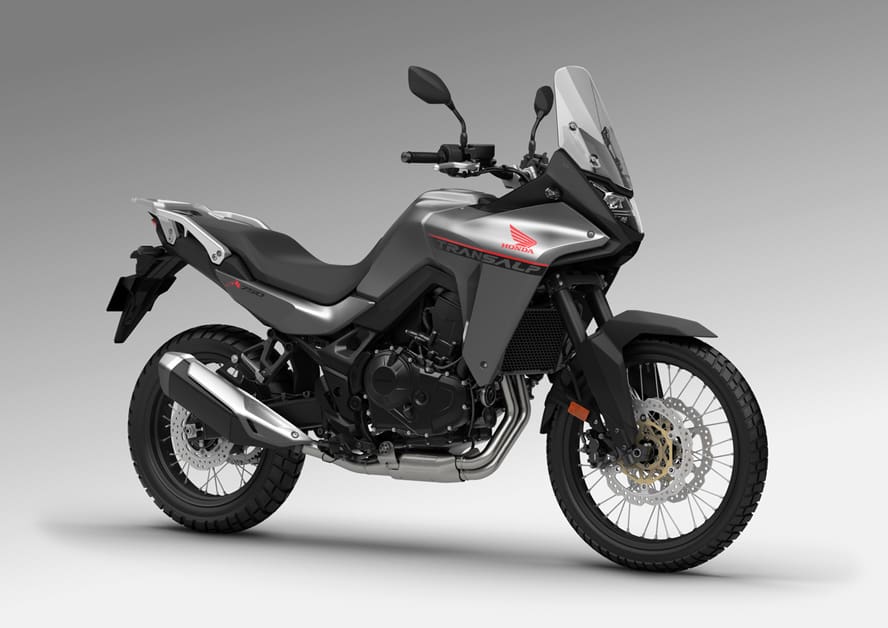
Honda claims a kerb weight of 208kg for the Transalp, which is a solid 20kg lighter than the V-Strom, and it carries its weight well, not suffering from the top-heavy feel of some adventure machines. The combination of a lowish seat height and well-balanced weight distribution means the Transalp is undaunting compared to many adventure machines – and with a lower seat option available, it would be a good choice for riders with shorter legs.
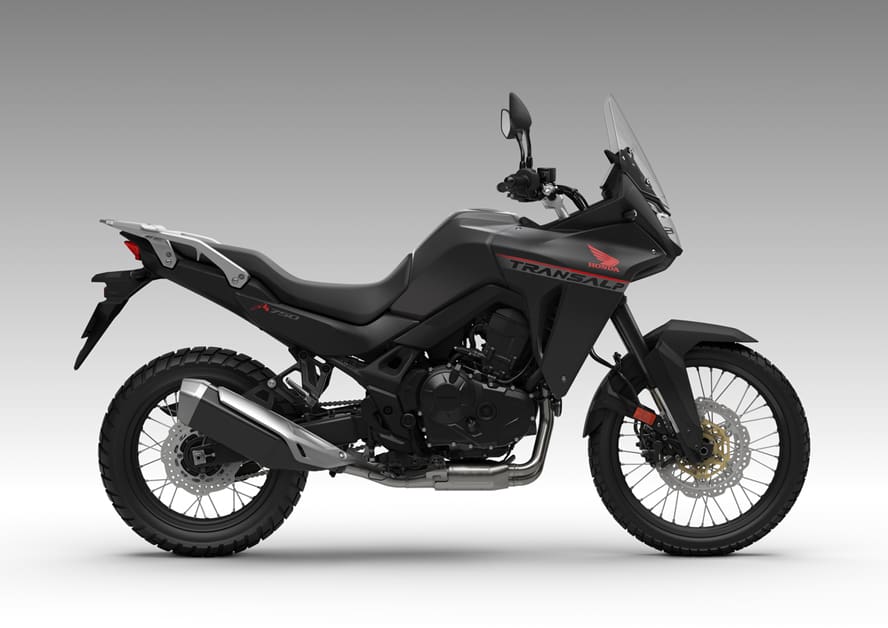
At the heart of the Transalp is Honda’s new 755cc parallel-twin engine slotted into a steel diamond frame. If the setup looks familiar, it’s because the Transalp shares the same engine and the same mainframe as the CB750 Hornet; only the subframe is different, which is beefed up to cope with the luggage and pillion weight that an adventure tourer might be expected to cart around.
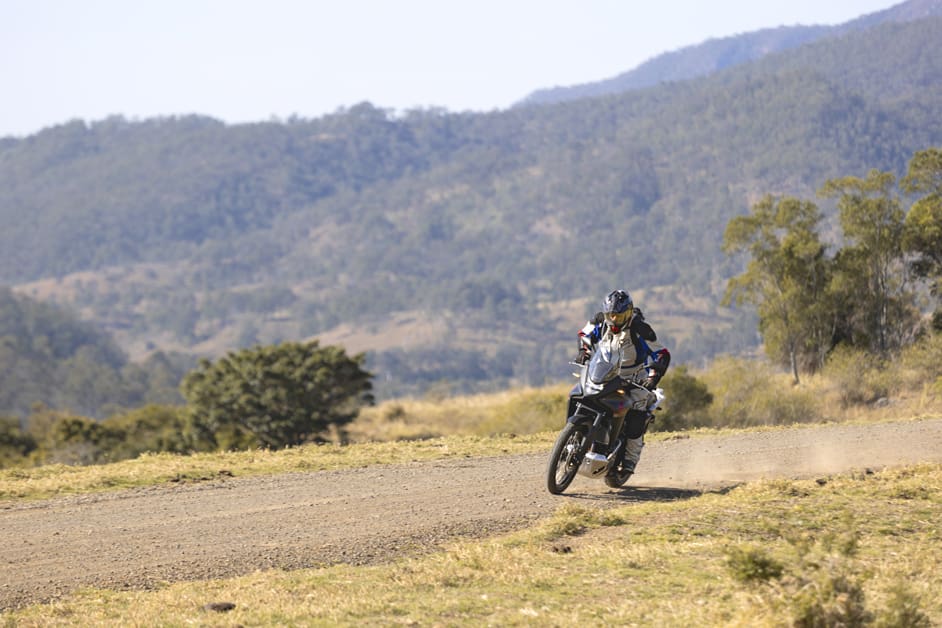
Honda says the Transalp has a different state of tune to the Hornet but claimed peak output is the same at 67.5kW (91.8hp) of power and 75Nm of torque. It’s in the midrange that the Transalp does its best work, and it’s spinning at a tad over 4000rpm at 110km/h, right in the fat zone. It’ll pull along in sixth from as low as 2000rpm, but twist that throttle and the Transalp is capable of showing a surprising turn of speed.

The parallel twin runs a 270-degree crank for better low-down grunt, but from memory it lacks the bottom-end punch and top-end rush of the V-Strom 800DE. However, the midrange feels livelier on the Transalp, which is perfect for tarmac and higher-speed dirt road riding.

The sump on the Transalp hangs low and it would be advisable to stick to relatively well-maintained tracks until you have some protection fitted. While a bashplate isn’t fitted as standard, there’s a sturdy looking optional unit available for $762.30. If that seems a bit steep, I suspect there will soon be a handful of aftermarket options available too, if not already.
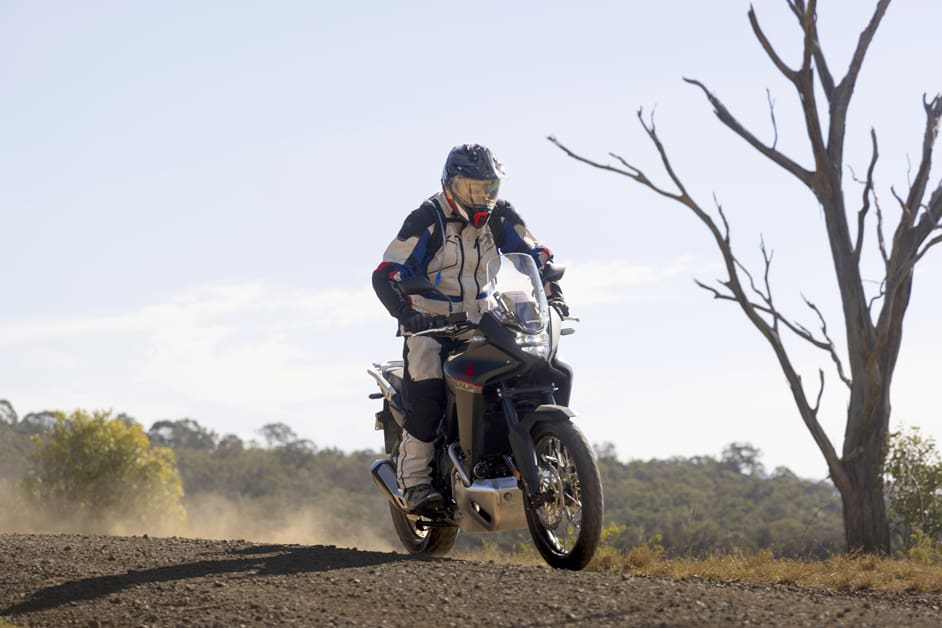
Fuel is pumped to the engine via 46mm throttle bodies and the Transalp breathes through a paper airfilter. I reckon we’ll be seeing a foam element or pre-filter from the aftermarket brigade in the not-too-distant future, and I’d recommend going that way if you’re heading bush.
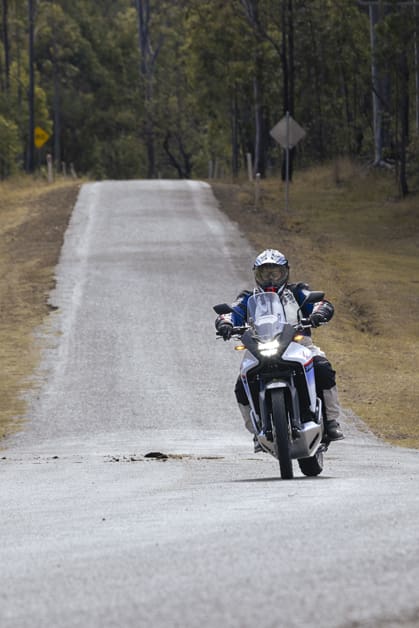
The six-speed gearbox is as slick as you’d expect from Honda and the optional quickshifter will set you back $399.21. On the launch ride I didn’t get the opportunity to test a Transalp with the quickshifter fitted, but if it works as well as it does on the Hornet, it would definitely be a worthy addition to the Transalp.
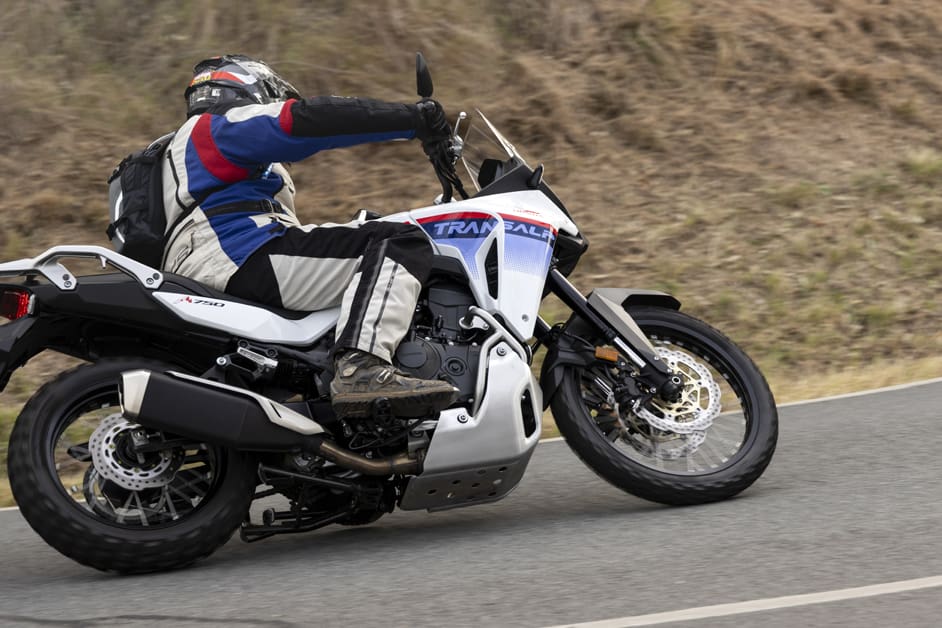
The clutch has a slip and assist mechanism which makes the lever pull very light, and stops the back wheel from skidding as you bang down through the gearbox.
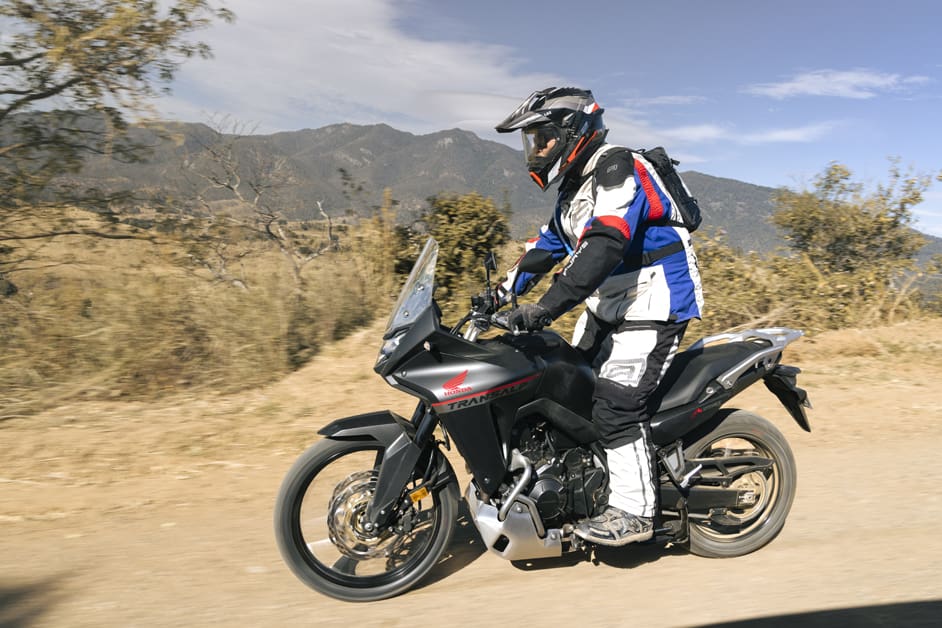
The only suspension adjustment is preload on both ends, and the standard setup is on the soft side, so if you want to beef it up for off-road forays you’ll need to open up the 43mm Showa fork and play with spring rates, and likewise play around with the rear shock. Having said that, if your riding will consist of mainly road duties, with the occasional spattering of dirt, the Transalp produces a comfortable and composed ride.
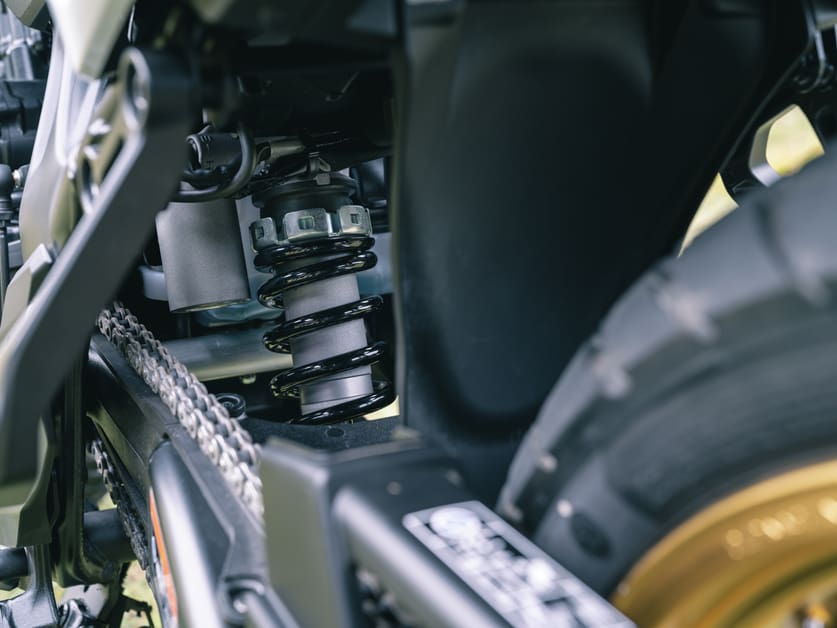
For the record, there’s a reasonable 200mm of travel available at the front and 190mm on the rear suspension, and the Transalp has a claimed 210mm of ground clearance, which gives a good indication of the level of off-roading this bike is aimed at.
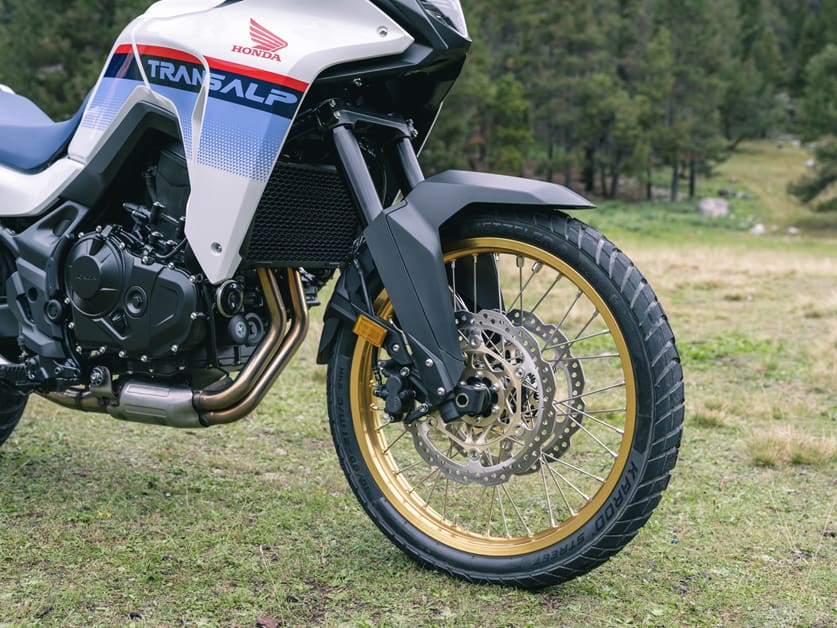
On the initial section of the launch ride, I was on Daryl Beattie’s daily Transalp, which was fitted with knobby tyres on Africa Twin rims; these apparently slip straight in. Even with the knobby-tyre ‘wallowing’ factor, the Transalp’s road-handling ability is impressive. It turns in extremely well, feels well balanced under brakes, changes direction with ease, and get a bit carried away and you can even scrape the ’pegs easily enough… with knobbies fitted!
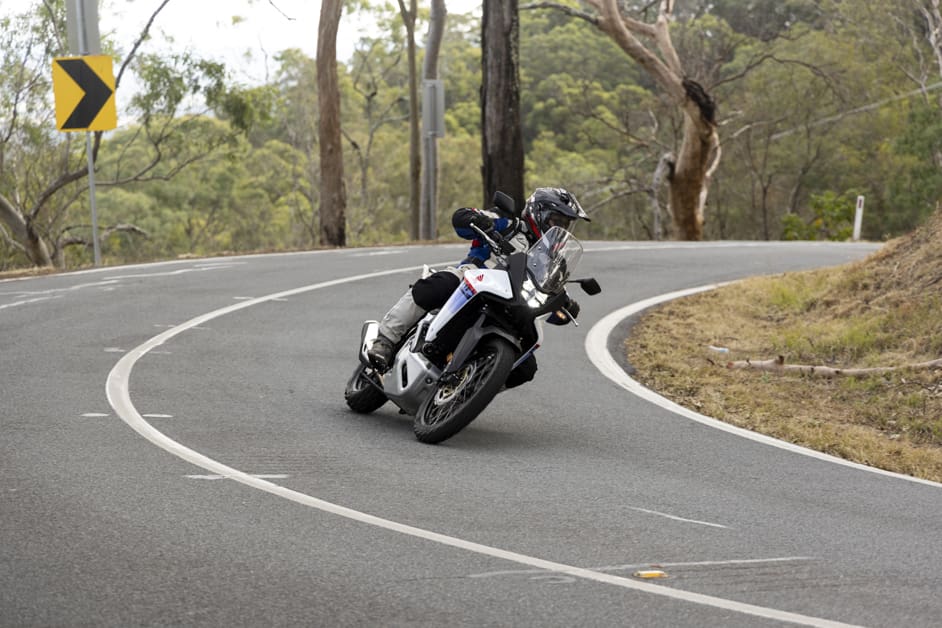
On the latter part of the launch ride I was able to sample a Transalp with the factory-fitted Metzeler Karoo Street tyres and, as you would expect, this made an immense difference to the feel and stability of the bike, further improving on what already felt like an impressive on-road handling package.
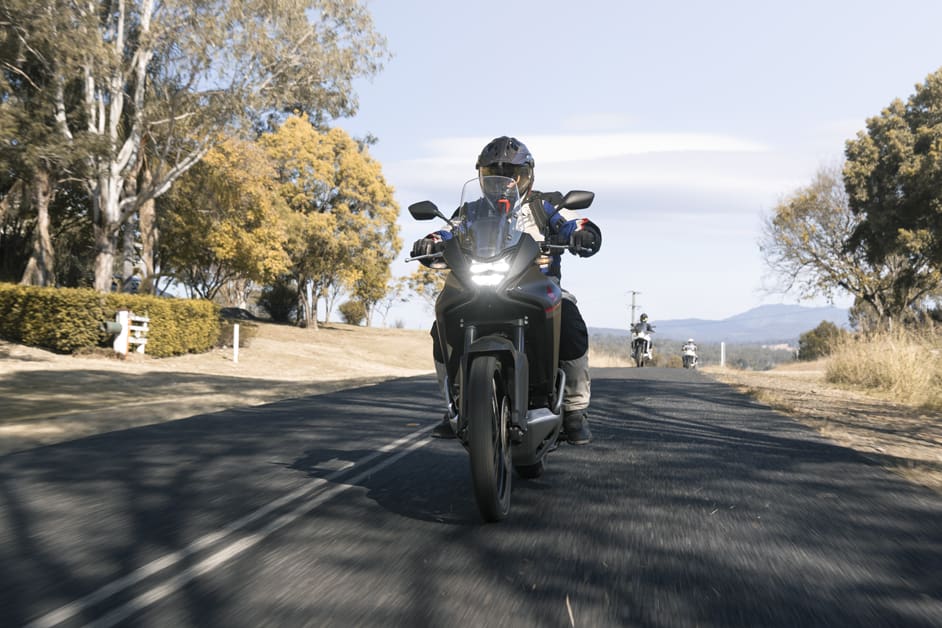
The Transalp rolls on 90/90-21 and 150/70-18 rubber and it will be supplied with either Metzeler Karoo Street or Dunlop Mixtour tyres. The combination of 21-inch and 18-inch wheels means that your choice of more aggressive dirt rubber will be vast. The Transalp’s wheels aren’t tubeless, so you’ll need to cater for that with an appropriate tyre-repair kit if you’re heading into the great unknown.

The Transalp is equipped with brakes from Nissin and what’s on offer is more than enough to handle the job. There is plenty of power from the twin-disc front setup with enough feedback through the lever to make that power manageable on the slippery stuff. The front brake lever is span adjustable, but the clutch isn’t. ABS can be switched off on the rear but it defaults to ‘on’ every time you switch the bike off, so you have to dive into the menu to switch it off again.
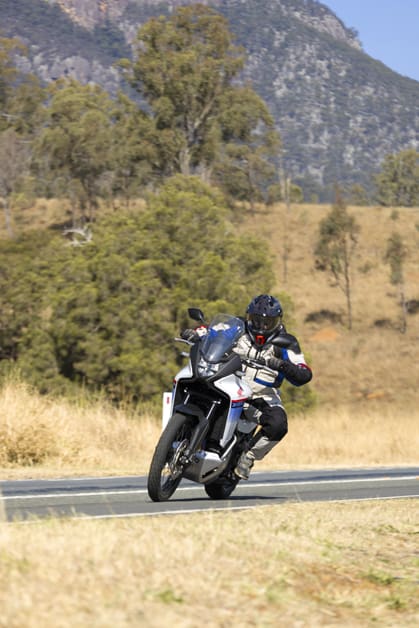
The TFT dash is your gateway to the brains of the Transalp. There are four different screen layouts available, and it is infused with Honda’s Smartphone Voice Control (HSVC) system that lets you connect to your device and in-helmet comms to control a variety of functions from the screen controls on the left-hand switchblock. HSVC allows you to make and receive calls, deal with your messages, listen and control your tunes and even check the weather. There’s also on-screen navigation available through the Honda Ride app.
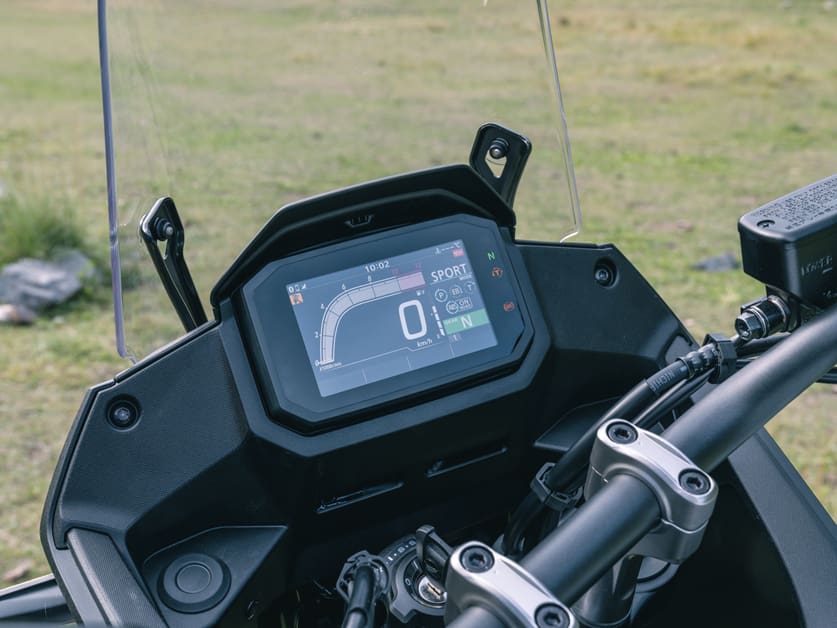
As lovely as this is I can’t tell you how well the app works because I couldn’t figure out the process to connect via Bluetooth to my iPhone, either by myself or with the help of some of the Honda crew who were on hand. This could be a matter of me missing a step in the connection process, which is a side effect of the finicky nature of the menu. You’d get used to it, I’m sure, but it’s in no danger of being called intuitive.

The Transalp has a bunch of electronic features that would have blown your mind just a few years back that many of us take for granted these days. There are five ride modes: Sport, Standard, Rain, Gravel and User, the latter allowing you to adjust traction control, engine braking, power delivery and ABS sensitivity. Full power is delivered in each mode with only the delivery of such toned down incrementally from Sport to Rain.

Gravel mode allows some slide on the rear but it’s so conservative I ditched it for User mode with traction control switched off. The tractable nature of the engine allows you to perform measured slides at will anyway.
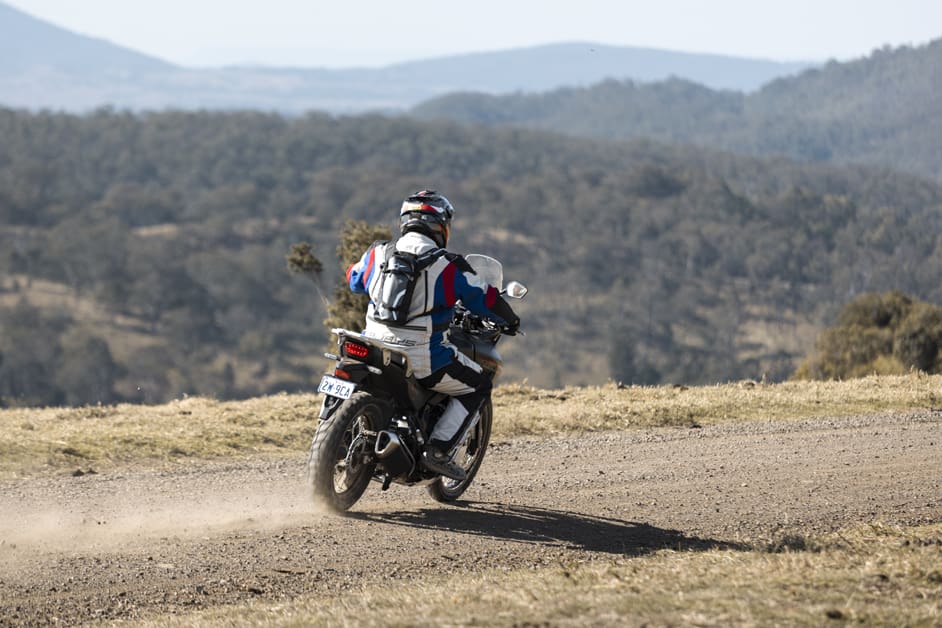
Also on hand are auto-cancelling indicators, Honda’s Emergency Stop Signals feature, which means the hazard lights will come on if you rip on the anchors, and there’s a USB socket hidden under the seat. On a bike capable of ripping out kilometre after kilometre, it’s a shame there’s no cruise control fitted, and an even bigger shame that it’s not available as a factory option.

And the Transalp sure is a capable adventure tourer. The fairing and non-adjustable screen offer good wind protection – there’s a higher screen available if you want more – and the plush suspension and midrange-happy engine are just screaming for you to hit the open road. Honda reckons the 16.9-litre fuel capacity will get you around 390km… if you can last that long.
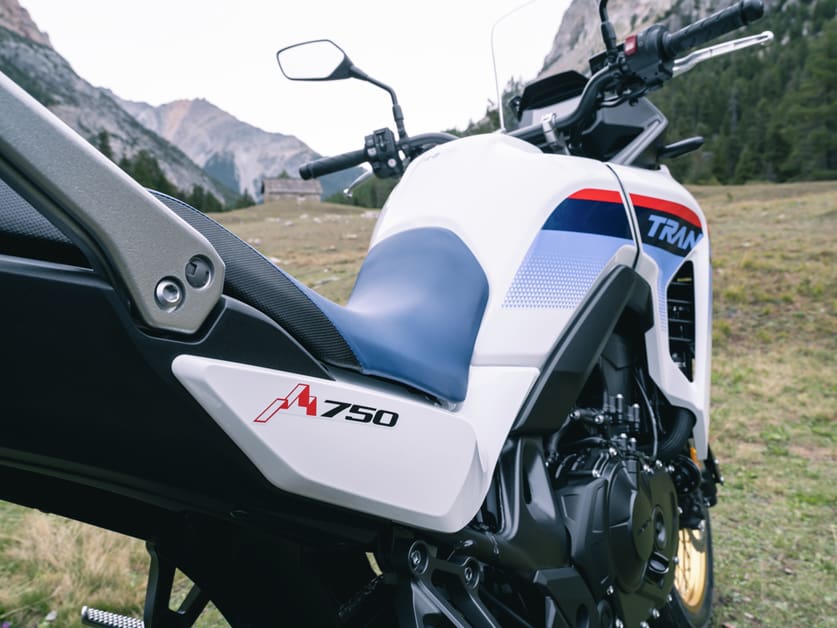
The Transalp’s seat, which initially felt firm but comfortable, started to show teeth after an hour or more in the saddle, and by the end of my 300km ride I was performing all sorts of acrobatics to alleviate my unhappy cheeks.

The subdued terrain we covered on the launch didn’t allow the variation or opportunity to really give the Transalp a good thrashing, but my first impressions lead me to think it’s best described as an adventure tourer that sits somewhere between the road-biased CFMoto 800MT Touring and the Suzuki V-Strom 800DE. It’s an impressive tourer but if you want to hit the Simpson, you’re going to need to throw some cash at it.
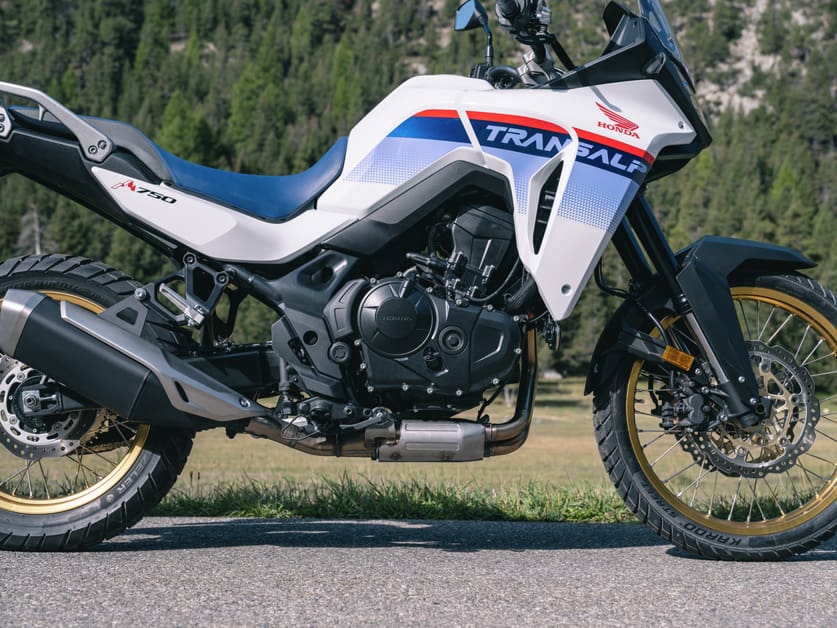
But I don’t want to poison the well before I’ve had the chance to give the Transalp more time. We have hit both Honda and Suzuki up for their two new models and we’re looking forward to putting the two Japanese contenders head-to-head in settings more akin to what your average adventure rider might target, so keep an eye out for that comparo in an upcoming issue.

Honda is aiming the Transalp at those stepping up to their first big adventure machine, or even Africa Twin riders looking for something a bit lighter and more manageable, and I reckon that’s about right – as long as you’re not seeking crazy off-road adventures.
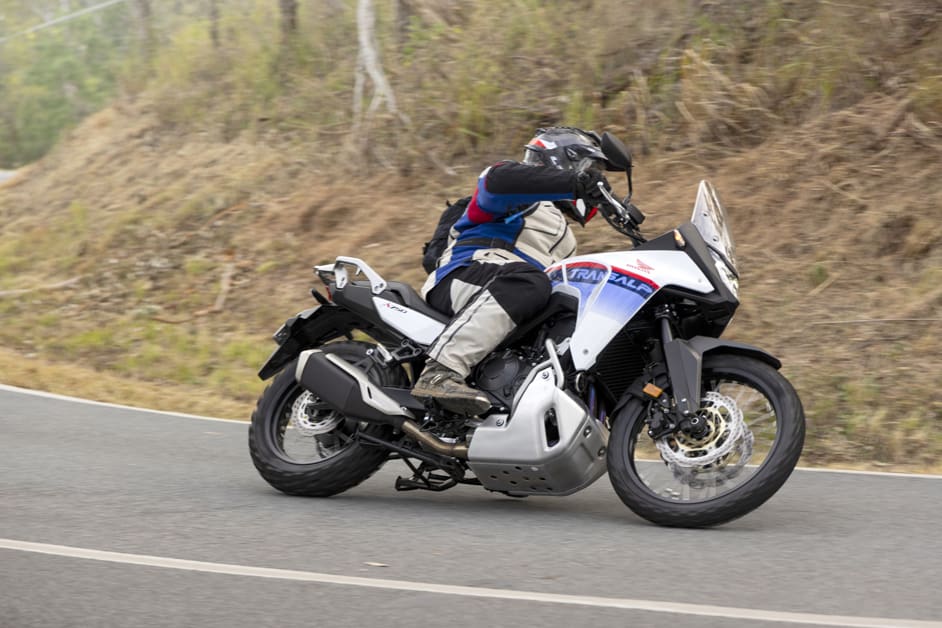
There’s no doubt the Honda Transalp is a fantastic adventure tourer, and I can’t wait to see how it performs in more gnarly off-road conditions, how it handles on the road without knobbies, and how it stacks up against the Suzuki V-Strom 800DE.

TEST: PETE VORST PHOTOGRAPHY BEN GALLI


